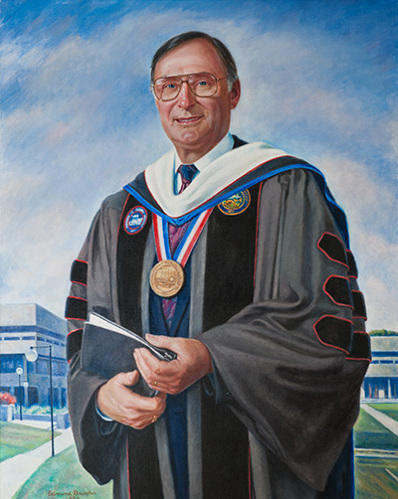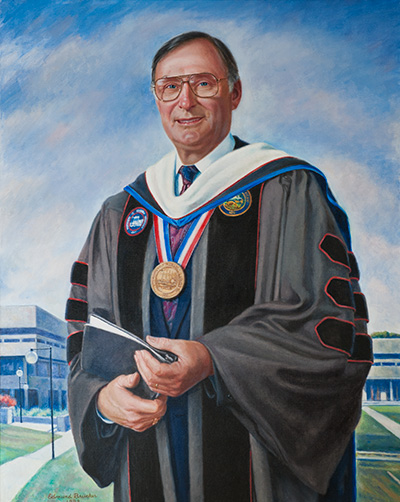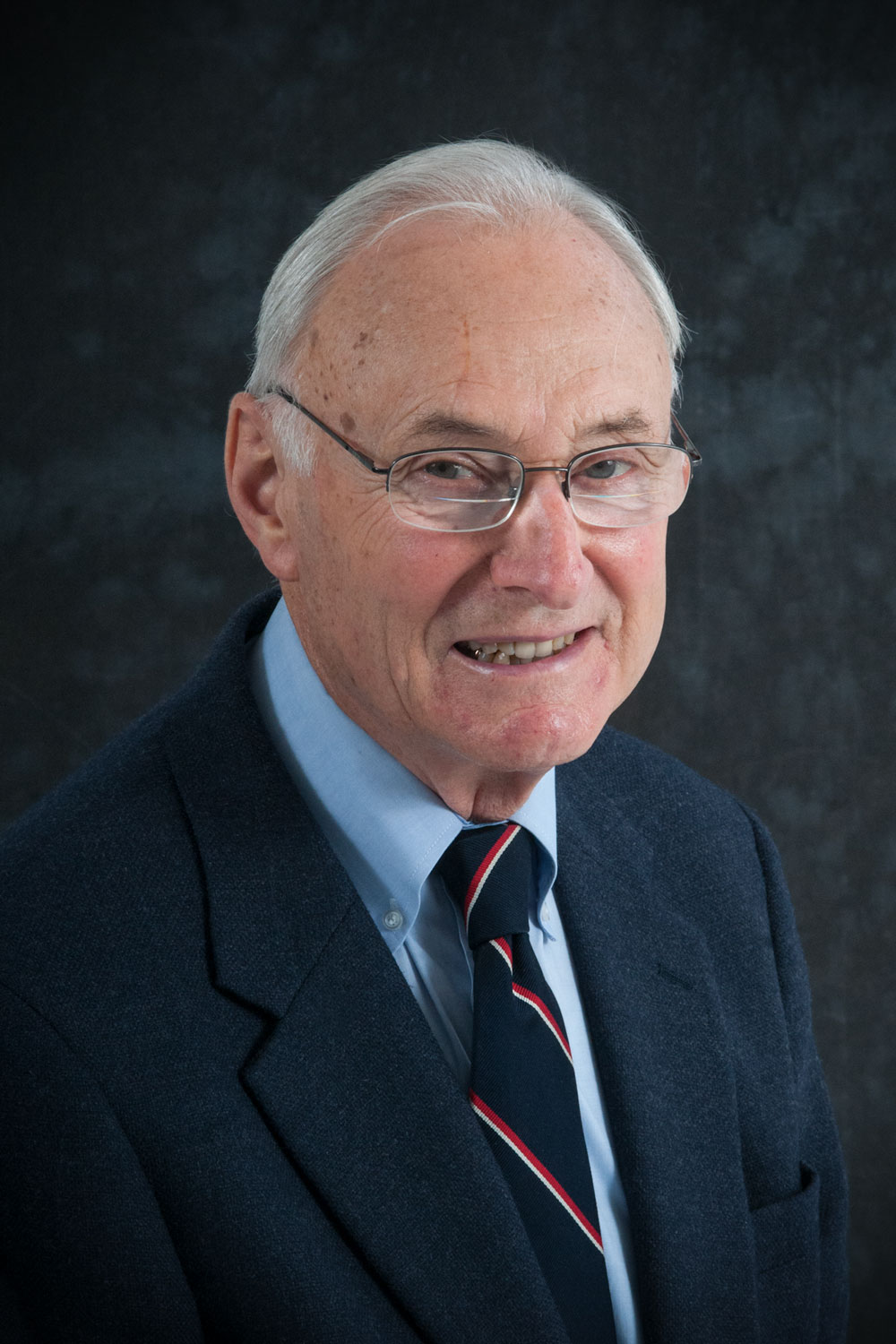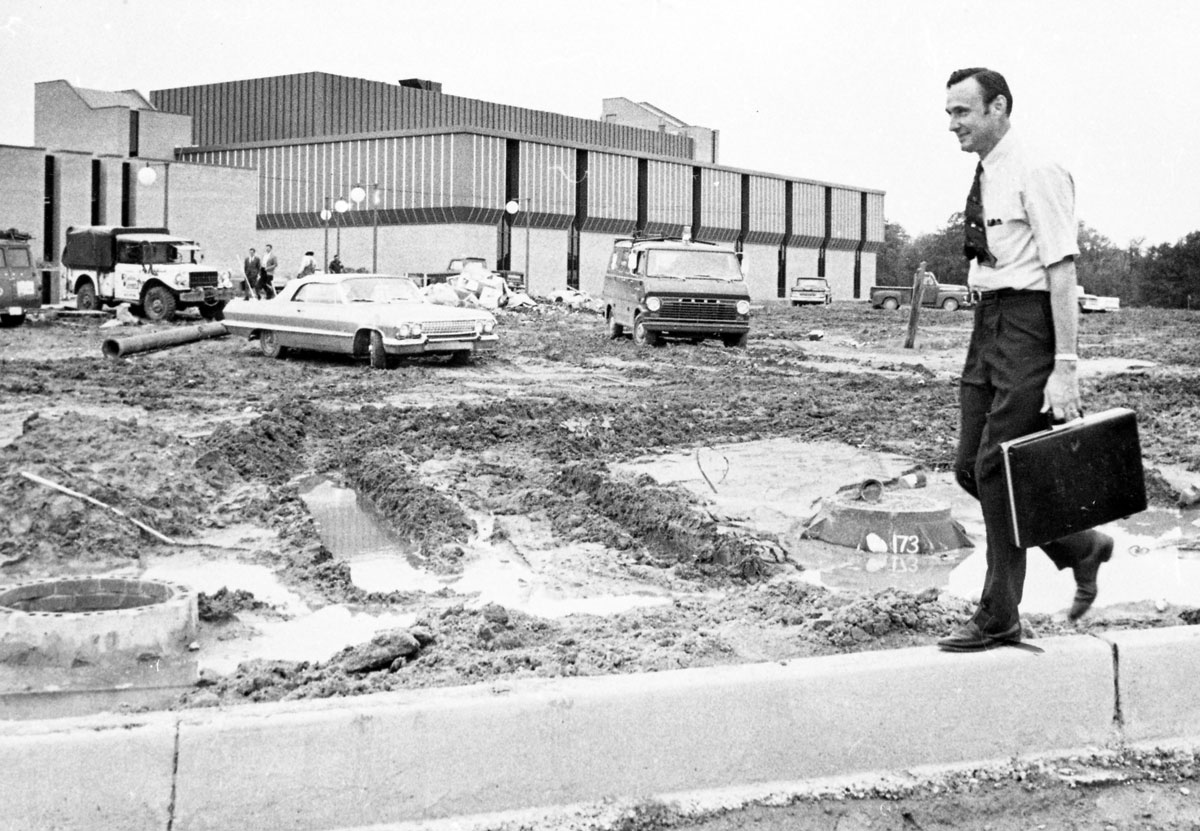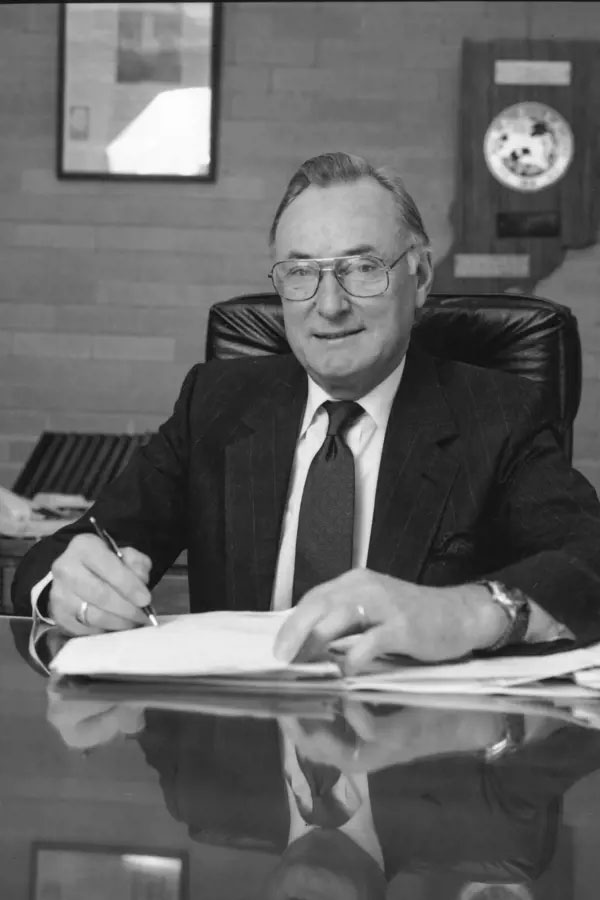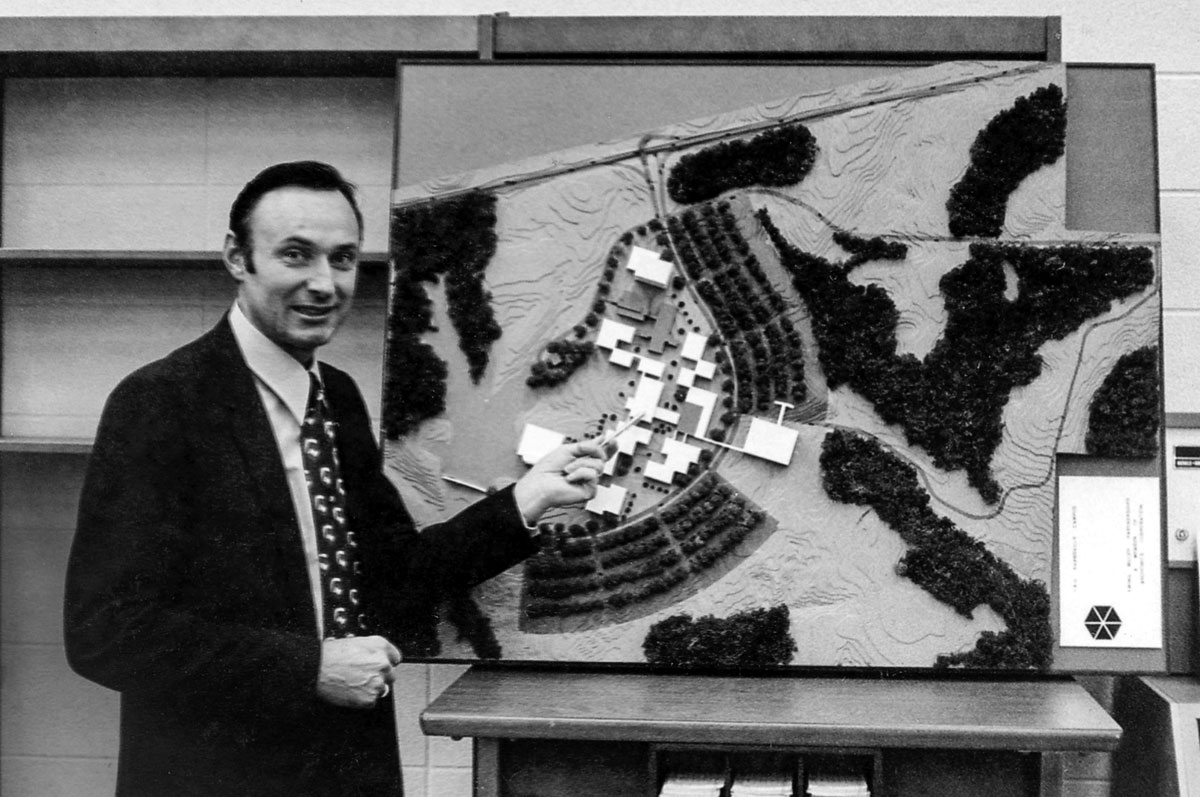
Term of Office 1967-1994
Dr. David L. Rice was the first dean appointed to lead the Evansville campus of Indiana State University in 1967, two years after its opening. In 1971, he was named president of campus and in 1976, Indiana State University also named him a vice president of the main campus. Under his leadership, the Evansville campus evolved into a separate state university, University of Southern Indiana, regarded for its excellent educational programs and innovative regional outreach projects. When he retired in 1994, it was noted that Rice was one of a handful of contemporary University presidents who had led their institution for at least 25 years.
The focus of Dr. Rice’s presidency for 27 years was on serving students well, improving the educational attainment level of southern Indiana, positively impacting economic and workforce development and matching innovative faculty interests with the communities of southern Indiana. During his tenure, enrollment grew to over 7,400 on a master-planned campus with 1,400 acres. Dr. Rice oversaw the expansion of curricula from limited two-year degree programs to a comprehensive range of baccalaureate and master’s degree programs, as well as many cooperative programs with other universities. Under his leadership, USI became the first baccalaureate institution in Indiana to have a degree-transfer articulation agreement with Ivy Tech Community College, paving the way for the State of Indiana to develop a statewide community college system.
Dr. Rice earned his bachelor, master, and doctor of philosophy degrees at Purdue University.
Dr. Rice was a faculty member and served as director of Research at Ball State University, in Muncie, Indiana. He also served as vice president with the Cooperative Education Research Laboratory in Indianapolis and research coordinator in the Bureau of Research in the U.S. Office of Education in Washington, D.C.
He was president of the Board of Commissioners of the Evansville Housing Authority and chairman of the Governor’s Citizens Advisory Committee for Title XX of the Social Services Act. A founder of Leadership Evansville, he also served as its president. Dr. Rice was general chairman of the Fund Drive of the United Way of Southwestern Indiana, chairman of the board of WNIN Channel 9 Public Television, Explorer Chairman of the Buffalo Trace Council Boy Scouts; and president of the Indiana Public Broadcasting Society. He also served on the Board of the Evansville Museum of Arts, History and Science; the Indiana Business Modernization and Technology Corporation; the Chamber of Commerce of Southwest Indiana; The Villages, Inc.; Youth Resources; and Evansville Coalition of Adult Literacy; and was active in Rotary. In professional circles, he served the Indiana Conference for Higher Education as its president, and chaired former Congressman Lee Hamilton’s Southern Indiana Rural Development Project.
Dr. Rice earned many accolades from public service organizations, including the Junior Achievement Distinguished Business Leader Award, Salvation Army Service to Others Award, West Side Civitan Citizen of the Year, the National Community Leadership Conference Leadership Alumni Award, Rotary Civic Award, Boy Scouts Distinguished Citizen Award, and a Sagamore of the Wabash conferred by the Governor of Indiana. In recognition of this University leadership, both the USI Faculty Senate and the USI Alumni Council endowed scholarships in his name. The University Library was named in his honor and both he and Mrs. Rice received honorary doctorates from USI.
Upon retirement from the presidency of USI, he and Mrs. Rice moved to New Harmony, Indiana, where they became active in historic preservation and community restoration. As a volunteer, Dr. Rice led the funding campaign and directed the $2.5 million restoration of the Rapp Owen Granary. It was dedicated in 1999 and is now an important center for historical and cultural events in New Harmony. As a commissioner for the bi-state bridge between New Harmony and Illinois, he was an ardent advocate for state and federal funding to stabilize and re-open the structure.
